Before the pandemic struck, Sara Blazey made the same three-hour commute to work, three days a week, for the better part of 12 years. The 63-year-old family lawyer from the Blue Mountains works for a domestic violence legal advice hotline in Parramatta and it used to be that she would wake at 7am, drive seven minutes to Hazelbrook station and from there catch the 7.17am train to Parramatta before making the same one-and-a-half hour trip home in the evening.
With the pandemic, all that would change. Domestic violence support services such as the one Blazey worked for were declared “essential” services, meaning they could keep operating despite restrictions. To ensure they could do so safely, the organisation did what some commentators long thought impossible and began to transition its employees into working from home.
“There were a couple of us older ones in the office who said it all sounds too hard, really,” Blazey says. “And then we were reluctant to work from home. My home is my home. I don’t particularly want to do my work from there.”
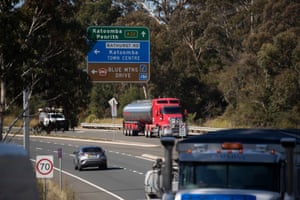
As the country went through a collective tech upgrade, millions of workers like Blazey retreated from office blocks and entire cities emptied out. It was a pattern that would be replicated worldwide. Streets devoid of cars and pavements free of people were so haunting that photographs of cities including New York, Paris and Sydney were shared across social media.
Within Australia, the scale of this change was captured in data obtained by the Grattan Institute. Anonymised geolocation data gathered from people’s mobile phones showed how crowds in central business districts along the east coast had thinned by half even before the Australian government announced stage-one restrictions on social movement. By mid-April they would be nearly deserted. Crowding in the Sydney, Melbourne and Brisbane CBDs had fallen to a fifth or less, while crowding around suburban train stations had fallen to a 10th.
Those like Blazey might have regained an extra three hours in their day but, as society begins to reopen, the question now is whether the embrace of working from home sticks. Should it become permanent, it may drive a radical change in the way governments think about how we drive, fly, commute and ride in the post-pandemic world.
Planes, trains and cars
Already transport is taking centre stage. In mid-April Labor’s transport spokeswoman, Catherine King, called for the construction of a high-speed rail line to be built between Brisbane, Sydney and Melbourne as a brace against a looming recession. King billed the idea – which has been around since the 1980s – as a “game changer” for regions along its route.
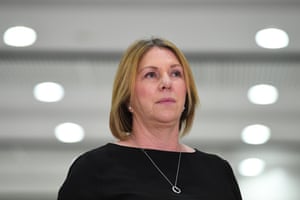
“High-speed rail has the potential to revolutionise interstate travel, allowing travel between capital cities in as little as three hours,” King said.
As an idea, the thought was as much about the past as it was the future. A century ago, when economies were transport-driven, everything depended on the ability to move people around. Ever since, planes, trains and cars have played an outsized role in the imagination, especially for policymakers looking for “shovel-ready” projects.
Marion Terrill of the Grattan Institute says this romance may prove costly today. Having studied proposals for high-speed rail, she says that if the country were to lock itself into such a project, it would be 22 years before the first leg was complete and it would be 39 years – if not longer – before the country saw any reduction in carbon emissions.
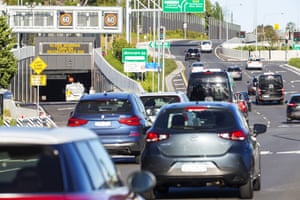
“The thing about fast rail is it plays to our dreams,” Terrill says. “We love fast rail. It’s something people respond to emotionally. It’s all things to all people: it’s going to create jobs, take the pressure off cities, help regions, or serve as stimulus.”
“When we looked at it, most of the benefits go to business travellers going between Sydney, Melbourne or Brisbane.”
Terrill says this applies not only to future projects, but extends to existing ones which should now come under review. With no vaccine expected for at least 18 months – if ever – it is possible social distancing regulations may remain even as restrictions on social movement are lifted. With lower capacities and lower populations expected, it may no longer be possible to justify many existing projects, including the $18.6bn WestConnex underground roadway and a second airport for Sydney.
These decisions may raise questions about the future of mass transit itself, especially among austerity-minded governments concerned about their debt burdens. Faced with renewed mistrust of public spaces and social distancing requirements, public transport systems must now be retrofitted to reduce touchable surfaces and capacity. Doing so carries a cost beyond the financial.
The risk, says Prof Kim Dovey, the chair of architecture and urban design at Melbourne University, is that the lowering capacity will make public transport unviable when what’s needed is a massive expansion.
“The virus is really an attack on cities, in many ways,” Dovey says. “One of its biggest effects is it stops cities from functioning effectively. It stops people from coming together and interacting. This, in my view, is what makes cities work.
“If people want to stay two metres apart from each other into the future, that will kill cities.”
Thought of in this way, Covid-19 is the sociological equivalent of a distributed denial of service attack – where a swarm of computers repeatedly attempt to access the same system all at once, eventually overloading it with demand. If at the start of the pandemic the main concern was the ability of health systems to cope, now the worry is that secondary systems like transport will buckle.
The consequences are profound. If density and walkability combine to make cities vibrant places to live, public transport is the sinew that makes it possible. Cars may have dominated cities over the last century but in the last decade patronage of public transport has slowly grown once more. Should this trend be broken, Dovey says, the result would be “tragic”.
“Reducing public transport to 30% will kill cities,” he says. “We really need to go the other way.”
These concerns go beyond trains, trams and buses to the “microspatiality” of cities and efforts to green them. The more room provided for cars, the less there is for footpaths. Lifts in high-rises built to handle eight to 10 people become unworkable when they are limited to one or two.
“Right now a lot of people will avoid public transport for a while, which means they’ll get in their cars,” Dovey says. “And that will produce demand for more roads, as it always does.
“People still believe building roads can ease congestion but that is not true. All it does is stimulate demand for cars. This is going to set back major moves for cities that have been going on for a long time, particularly in trying to claw back space for usage from cars.”
A fork in the road
In January 2019 the Australian car fleet numbered 19.5m, according to the Australian Bureau of Statistics. With millions now out of work or working from home, many of these vehicles have remained off the road. What comes next depends on what happens when restrictions are eased and those people go back to work – particularly as global oil prices remain low.
The cause was simple enough. As whole national economies were put on ice at the start of the pandemic, the world’s oil producers kept pumping even as demand fell off a cliff. When they ran out of storage the mismatch between supply and demand grew so chronic oil producers in Russia found it easier to burn their excess, marking a disaster for efforts to combat climate change.
“Oil fields are not like wine bottles, where you can put in a cork and return to it later,” Jeff Colgan says. “Shutting an oil field down can damage it, which reduces or even eliminates the field’s future production.”
Colgan is the Richard Holbrooke associate professor of political science at Brown University and expert on the global oil industry, who says low fuel prices will last for some time.
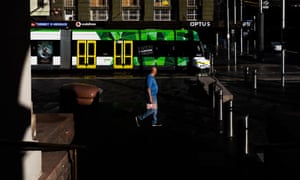
“Nothing lasts forever in the oil business but low oil prices are probably here to stay for at least the rest of the year and perhaps much longer,” he says. “Even when consumer demand increases after lockdowns end, there is an awful lot of inventory build-up that will keep prices from rising too quickly.”
Against this global backdrop, Australia – which boasts the highest sulphur content fuel in the OECD and rising road transport emissions – finds itself caught between two competing futures.
On the one hand, persistent low oil prices will make petrol cars cheaper to run, frustrating any attempt to encourage the uptake of electric vehicles as part of a transition to a zero-carbon economy.

The alternative scenario is exemplified by China. When Australia’s largest trading partner lifted restrictions and moved to reopen its factories early this month, its people stayed home. Should this pattern be repeated the world over, the cumulative fall in demand would destabilise oil-producing economies, while making it harder to decarbonise transport at home.
Some like John Quiggin lean more to this second scenario. While he acknowledges incentives created in the post-pandemic world may lead to less public transport and more cars on the road, the University of Queensland economist says “most forces are going the other way”. If historically the opposition to working from home by business was a meta-conversation about their ability to trust their workforce, the focus could shift to basic costs as social distancing regulations remain and the capacity of a working office falls.
“Offices are going to be under pressure to keep a lot of space and the very low-cost way of doing that is to give people a choice about whether they come in or not,” Quiggin says. “Meanwhile, electric vehicles are improving all the time. Their take-up comes with anything that pauses the growth of the car fleet which gives EVs a chance.”
What is true for the average employee will also be true for the boardroom. Even if Australia has avoided the worst of the virus, other countries have not. Many will remain in a state of lockdown for some time, forcing individual countries or regions to become more self-reliant. Freight may continue to move across borders into the future but people will not. Anyone looking to travel for business faces the prospect of a mandatory five- to 14-day quarantine each time a border is crossed. In the end, it will be easier – and cheaper – to do deals by video conference.
The same could also be said for Australia’s tourism, education and aviation sectors. Education-related travel services and personal travel services respectively ranked as Australia’s fourth and fifth largest exports in 2018-19. After the pandemic, tour operators, universities and airlines will no longer be able to rely on a steady stream of international travellers and students – a reality that is already forcing a restructure.
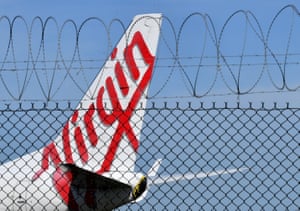
Since Quiggin became among the first to publicly call time on the airlines in late March, Virgin Australia has fallen into administration. Early on the government described Qantas and Virgin as “too essential to fail”, but it has so for allowed the weaker of the two companies to collapse. What happens next, Quiggin says, should be watched carefully.
“What happens to the airlines will be a signal for what it plans for the rest of the country,” Quiggin says. “There are three possibilities. One is [Virgin] will bounce back in the way the government hopes. One is it won’t bounce back and they’ll let it fall in a heap. The third is they’ll have to intervene or maybe they’ll be forced to do things they currently do not want to do.”
It is this that underlines the significance of the moment. In deciding the minutiae of how Australians get around, the country’s political leadership finds itself with enormous power to reshape society. Should they reach into the past to direct the future, the result could be a missed opportunity at best, or a grim new reality. Some projects, after all, lend themselves to the moment. Fixing the national broadband network – a $36bn international embarrassment – may eliminate the daily commute for millions while providing stimulus.
The most radical may be even more simple.
“One of the advantages is that right now the streets are empty of cars and we’re going to need more pedestrian space if we’re going to continue social distancing,” Dovey says. “We should be out there turning streets into walkways.
“All you need is a bit of authority and paint on the road. We could do a lot of good for cities if we had the nerve and the ideas.”